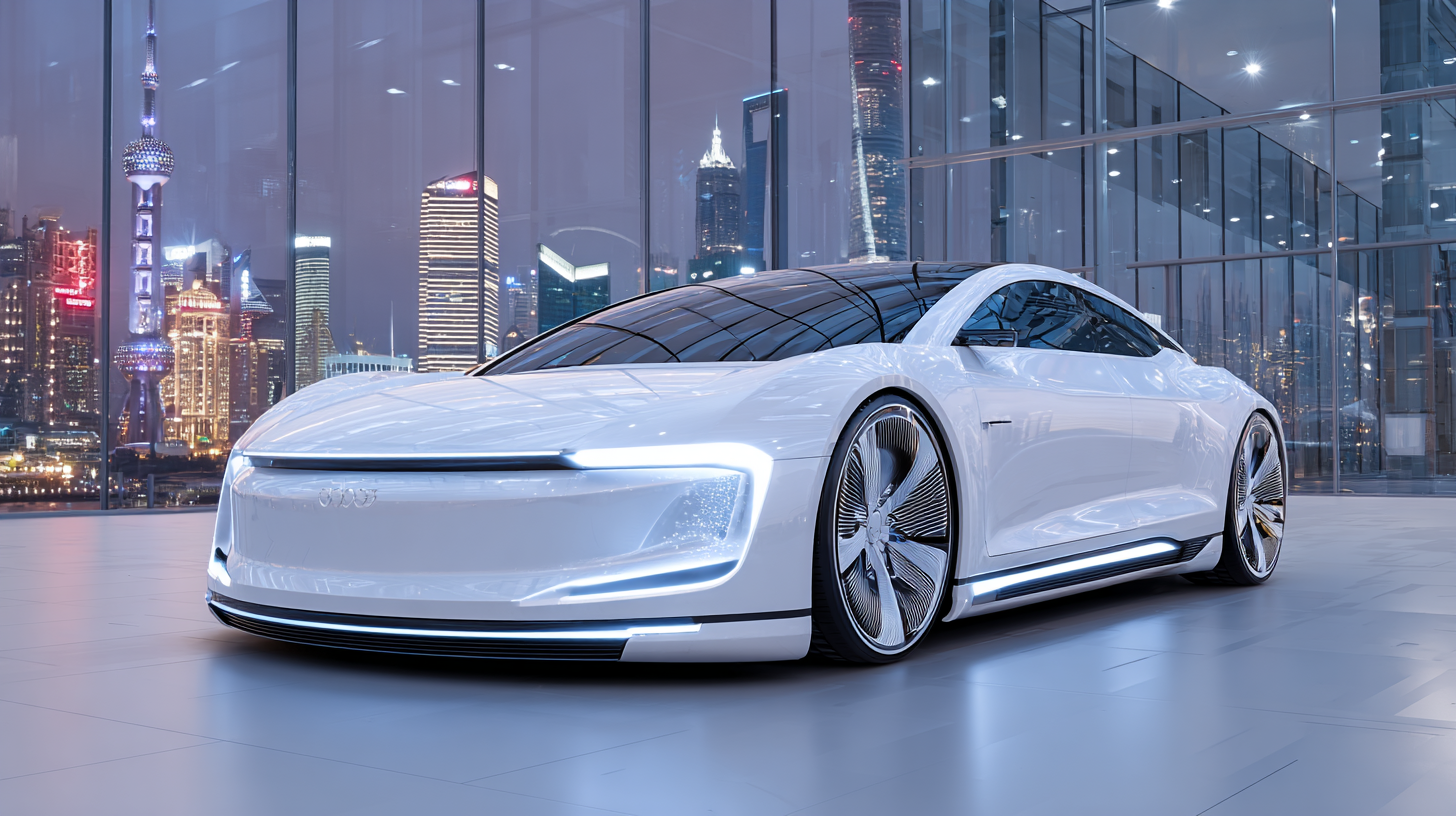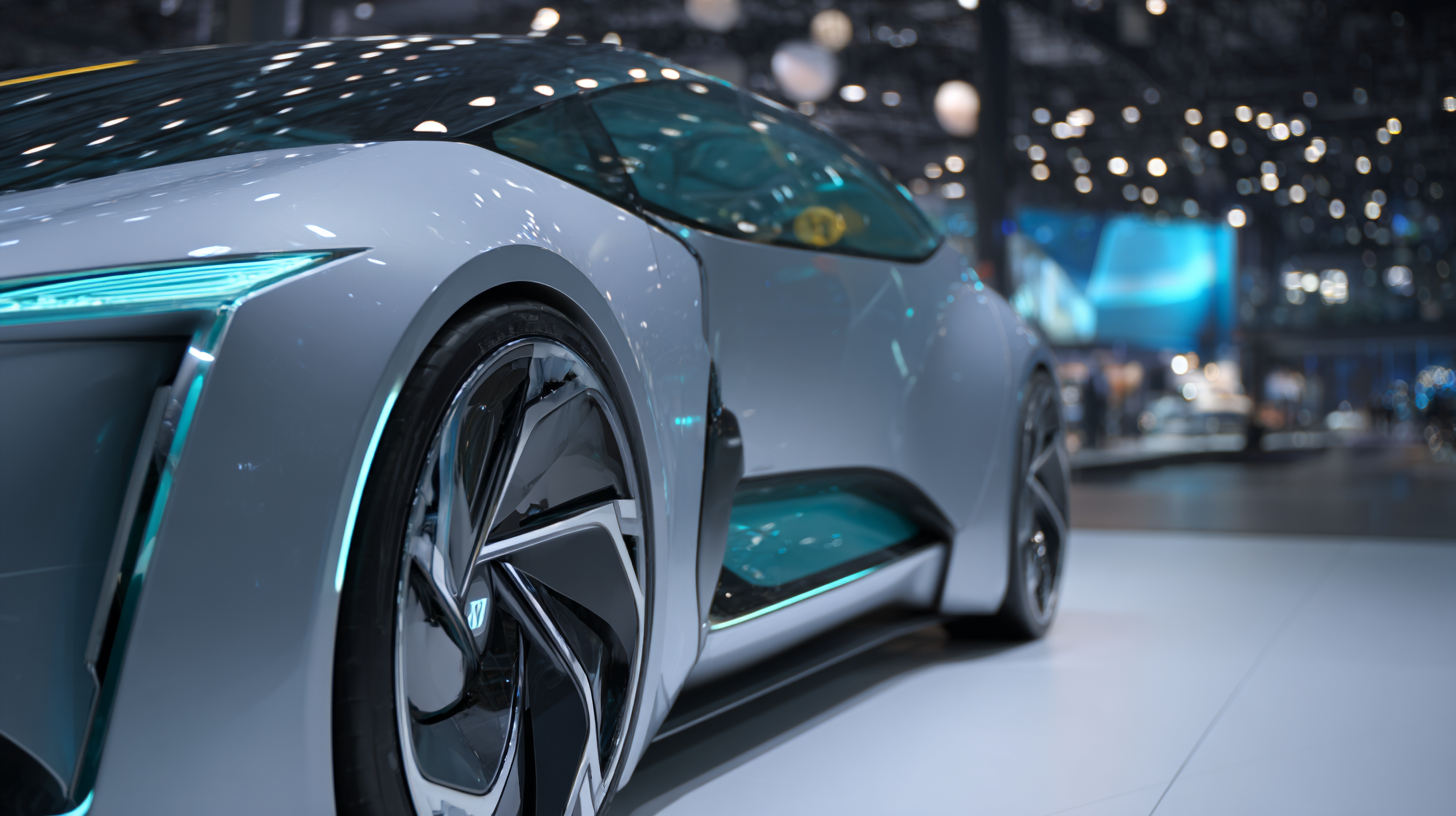Leave Your Message
As the world grapples with the urgent need for sustainable solutions, the field of transportation is undergoing a transformative shift driven by Automobile Electric technology. According to a recent report by the International Energy Agency (IEA), electric vehicle (EV) sales surged by 40% in 2020 despite the global pandemic, with projections indicating that by 2030, electric cars could account for 30% of global vehicle sales. This momentum is not just a passing trend; it represents a fundamental change in how we approach mobility and energy consumption. The adoption of Automobile Electric systems promises not only to reduce greenhouse gas emissions significantly but also to decentralize energy production and consumption. With continuous advancements in battery technology and charging infrastructure, the future of sustainable transportation seems not only feasible but inevitable, paving the way for cleaner urban environments and a reduced carbon footprint.

The rise of electric vehicles (EVs) marks a pivotal shift towards more sustainable transportation options in the modern world. As cities grapple with pollution and climate change, electric vehicles present a viable solution by significantly reducing carbon emissions and reliance on fossil fuels. Unlike traditional gasoline-powered cars, EVs utilize electric energy stored in batteries, which can be sourced from renewable energy, thus making them an environmentally friendly alternative. Innovations in battery technology have also led to improvements in range and efficiency, making electric vehicles increasingly accessible to the average consumer.
Moreover, the growing infrastructure for electric vehicle charging stations is crucial in promoting wider adoption. Government incentives and advancements in smart grid systems contribute to a favorable environment for EV use. Additionally, the societal shift towards sustainability has sparked interest in electric vehicles among consumers, showcasing a desire for cleaner, greener transportation. As manufacturers invest heavily in research and development, we can expect a wider variety of electric models in the market, catering to different needs and preferences, ultimately transforming the automotive industry and paving the way for a more sustainable future.
This chart illustrates the growth of electric vehicle (EV) sales from 2015 to 2022, highlighting the increasing trend towards sustainable transportation solutions.
The rapid evolution of key technologies in automobile electric systems is ushering in a new era of sustainable transportation. Central to this transformation is the development of advanced battery technologies, particularly lithium-ion and solid-state batteries. A report from the International Energy Agency (IEA) highlights that the global electric vehicle (EV) stock surpassed 10 million units in 2020, a remarkable increase driven primarily by advancements in battery efficiency and affordability. Solid-state batteries, with their potential to deliver longer range and faster charging times, are anticipated to dominate the market by 2025, thanks to major investments from automotive giants such as Toyota and Volkswagen.
Another crucial innovation is the integration of smart technology in electric vehicles. The rise of connected cars, equipped with artificial intelligence and machine learning algorithms, enhances vehicle performance and improves energy management. According to a McKinsey & Company report, the combination of these technologies could lead to a 30% reduction in energy consumption in the transportation sector by 2030. The synergy between sophisticated vehicle design and sustainable energy sources like solar and wind is set to redefine the landscape of urban mobility, making electric vehicles not only a greener choice but also a more intelligent one as we move towards a sustainable future.

The rise of electric vehicles (EVs) represents a pivotal shift in the pursuit of sustainable transportation. By replacing traditional internal combustion engines with electric drivetrains, EVs promise to significantly reduce greenhouse gas emissions. According to recent studies, electric vehicles can cut carbon footprints by as much as 70% compared to their gasoline counterparts, especially when powered by renewable energy sources. This change not only aids in combating climate change but also improves air quality in urban areas, contributing to healthier living environments.
Furthermore, advancements in battery technology and charging infrastructure play crucial roles in amplifying the impact of electric vehicles. As battery efficiency improves, the range of electric vehicles increases, alleviating concerns of range anxiety among consumers. Additionally, the growth of fast-charging networks makes EV ownership more practical and appealing. As more individuals transition to electric vehicles, their cumulative effect on carbon footprint reduction can be monumental, aligning with global efforts to achieve net-zero emissions and promoting a cleaner, more sustainable future for transportation.
The transition to electric mobility is fraught with numerous challenges across the globe, particularly in Europe, where a comprehensive report by the International Council on Clean Transportation highlights the competitive pressures faced by the industry. Manufacturers are scrambling to adapt to changing regulations and consumer expectations while striving to maintain profitability. In regions like Madagascar, where reliance on fossil fuels is entrenched, the shift to electric vehicles (EVs) represents a monumental hurdle that requires significant infrastructure and policy advancements.
As countries like Colombia and Kenya push forward, they encounter unique barriers such as financial constraints and the need for improved technology. In Colombia, initiatives aimed at accelerating electric mobility are met with both opportunities and challenges, necessitating a cohesive strategy involving stakeholders across the sector. Similarly, in Kenya, proposed policy measures underscore the potential fiscal benefits of transitioning to electric transportation, indicating a critical need for supportive government frameworks to facilitate this change.
**Tips for navigating the transition to electric mobility include:**
1. **Stakeholder Engagement:** Involve various stakeholders early in the process to ensure that all perspectives and needs are considered.
2. **Public Awareness Campaigns:** Educate consumers about the benefits and availability of electric vehicles to increase acceptance and adoption.
3. **Infrastructure Development:** Prioritize the establishment of charging stations and support services to alleviate range anxiety and foster consumer confidence in electric vehicles.

The advent of autonomous electric vehicles (AEVs) marks a pivotal turning point in sustainable transportation. These vehicles not only mitigate the environmental impact of traditional combustion engines but also enhance urban mobility through their intelligent systems. AEVs utilize a combination of advanced sensors, artificial intelligence, and connectivity features to navigate complex urban environments safely. This technology promises to reduce traffic congestion, minimize accidents, and lower greenhouse gas emissions significantly as more consumers embrace electric mobility.
Simultaneously, the development of smart infrastructure is crucial for the successful integration of AEVs into future transportation networks. Smart traffic lights, connected roadways, and real-time data-sharing systems are essential components that will help facilitate communication between vehicles and infrastructure. This interconnectedness allows for dynamic adjustments in traffic management, optimizing flow and reducing delays. As cities invest in these technologies, they pave the way for a seamless transportation ecosystem where AEVs and smart infrastructure work in harmony, ultimately transforming how we think about and utilize transportation in a sustainable future.
| Dimension | Current Trends | Future Projections (2025) | Impact on Sustainability |
|---|---|---|---|
| Electric Vehicles (EVs) | Growing adoption, diverse models | Estimated 50% of new cars | Reduced greenhouse gas emissions |
| Autonomous Technology | Testing in urban areas | Regulatory approval for widespread use | Increased road safety and efficiency |
| Charging Infrastructure | Expansion of public charging stations | Universal charging standards | Enhanced convenience for EV users |
| Smart Cities | Integration of IoT for traffic management | Cities optimized for electric vehicles | Decreased congestion and pollution |
| Battery Technology | Advancements in lithium-ion batteries | Solid-state batteries becoming mainstream | Improved energy storage and lifespan |






